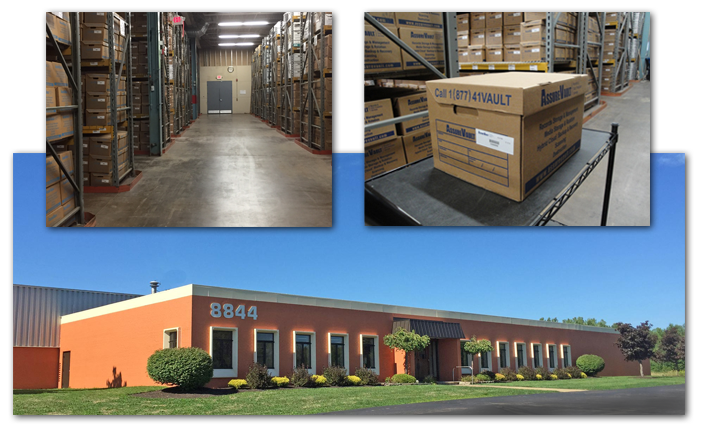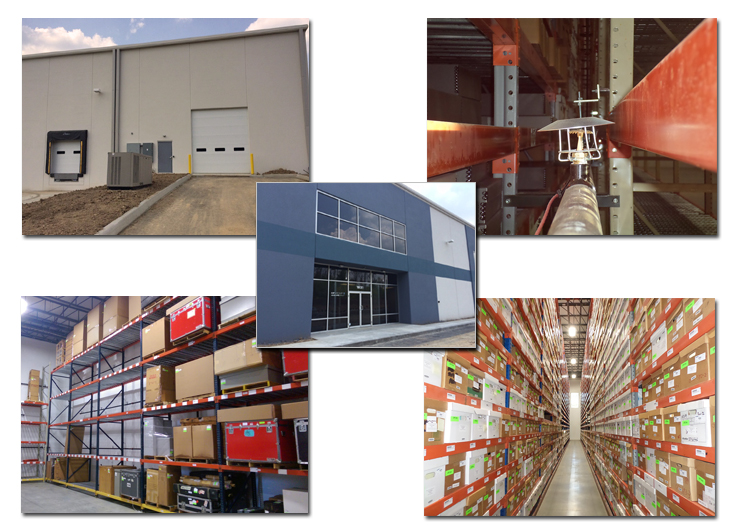AssureVault
What are the benefits of storing materials in an off-site, managed depository facility?
By moving low-use collections offsite, valuable library space can be repurposed. Materials remain properly and safely stored and are easily accessed.
Also, using a managed facility avoids major capital expenditures and offers lower long-term operating costs.
Would a depository be located in an existing facility or will a new building be constructed?
This depends upon real estate availability and opportunities in your region, as well as your requirements for distance from campus and delivery frequency and times.
What is the length of a typical depository contract?
A 10-year contract is preferable and offers substantial cost benefits however we are happy to discuss shorter-term contracts (5-year minimum).
How is the initial move accomplished?
There are several ways in which this can be done. Once the library has identified the items that will be stored offsite we will work with you to determine which option will be the best for your library. Several scenarios are listed below:
- Library staff can pull the selected items and deliver them to the repository for ingest.
- Library staff can pull the selected items and we will coordinate delivery to the depository.
- We can provide a team to pull the selected items and will coordinate delivery to the depository.
Using the library’s barcode, each item is scanned to a specific carton that is, in turn, scanned to a specific location. The location may be a specific pallet, truck, ingest area or rack address. This system of tracking allows us to quickly locate an individual item no matter where it is in the process.
Once items arrive at the depository they are isolated in an ingest area where they are inspected prior to being placed in the repository.
Please Note: for the physical move and transportation of materials from campus library(s), we partner with a known and trusted library mover, Carney-McNicholas. Their experience in library relocation ensures that your collections will be handled and moved with great care.
How long will it take to move our materials?
If you select option 3, above, we anticipate a window of ten weeks for every 500,000 library items (monographs, journals or mix).
Once the move is underway, how long do we have to wait before items are available?
Typically items will be available one day after they leave the library.
I have 200,000 items to move offsite. How does this affect my cost?
When storing a smaller collection you can expect the cost per item to be higher. However, you may wish to collaborate with other libraries, museums and/or archives in your area to increase the overall volume and lower costs. Consortium projects can result in substantial cost sharing and lower pricing when establishing a new repository facility.
Who will have access to the facility?
Only authorized staff members and library personnel will have access to the facility.
How is the repository staff selected?
All internal staff members undergo background checks. Once selected, staff members are trained in all aspects of the management and operation of the facility and in the care of your materials.
What types of services do you offer?
Once a facility is in operation we provide routine pickup and delivery services* to and from specified campus locations using a dedicated company vehicle.
We also offer scan-on-demand services for digital delivery of specific items, e.g. journal articles.
* Frequency of pickup and delivery is performed according to the terms of your contract.
How are delivery requests communicated to repository staff?
We work with library programming staff to develop an interface between your library automation system and our records management system. When a patron requests an item, the order is automatically received and processed in our management system, minimizing library staff cost and involvement. Requested items will be delivered according to the schedule established for your facility.
What type of monitoring and physical inspections does your service ensure?
We offer digital monitoring of temperature, humidity and air quality. Clients can, if desired, use our web site tools to monitor real-time and historic climate conditions of the facility.
What happens if there is a utility outage?
Your facility will be equipped with a generator that will supply the emergency power needed to operate all management, security and environmental control systems.
How does your storage model differ from the “Harvard Model” of offsite storage?
All other considerations being similar, the key difference lies in the style of storage.
- Items are not stored by size, eliminating the time-consuming pre-sorting process.
- Books and journals are stored in closed, acid-free cartons that provide a consistent microclimate for your materials.
- Items being returned from the library are not returned to their original cartons. They are scanned and placed in a different carton, which makes the re-boxing process highly efficient. To maximize space, our software identifies cartons that have excess capacity and future returned items are placed in those cartons.
If our institution has Records and Archives in addition to Library items for potential offsite storage, is the mixing of these materials appropriate and, if so, how is this type of storage priced?
Our facility specifications are suited for archives storage, not just library materials. Based on a minimum initial quantity located, archives storage is priced by the cubic foot.
AssureVault operates two library depository facilities, one in Chesterland, Ohio, on the east side of Cleveland, and one in Gahanna, near Columbus.
Chesterland, Ohio
The Chesterland facility, adjacent to HF Group’s library bindery, has a capacity of 90,000 cubic feet and currently stores approximately 800,000 books and bound volumes for several major universities and institutions in the northeast Ohio area.

Gahanna, Ohio
The Gahanna facility was purpose-built to provide archives and library storage and depository services for The Ohio State University and other clients. Construction began in late 2014 and was completed in February, 2015. With a storage capacity of more than 100,000 cubic feet, the depository currently holds more than 30,000 cubic feet of archives and library materials including special collections items of all sizes. Regular pickup and delivery service, including daily retrieval, is available as required.

Specifications
Both facilities was designed specifically for the long-term storage of library materials and is equipped with environmental control systems to manage and monitor the temperature, humidity and air quality to very tight tolerances. Physical security, controlled access, fire protection and life safety are also key features of our facilities.
Items are managed using AssureVault’s high-availability, cloud-based Total Recall™ records and information management system that is hosted in the company’s SSAE 16-certified secure, dedicated, data center located in Canton, Ohio. The system is fully replicated, with failover capability, in a second SSAE 16-certified data center in Cleveland, Ohio, which operates on a completely separate power grid.
Services
We offer a wide range of pickup and delivery services that can be customized to meet your needs.
Digital document delivery is also available for journal articles and book chapters when retrieval and delivery of the physical volume is not required or preferred.
